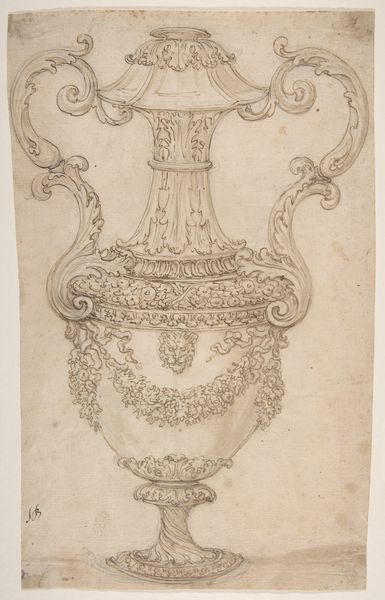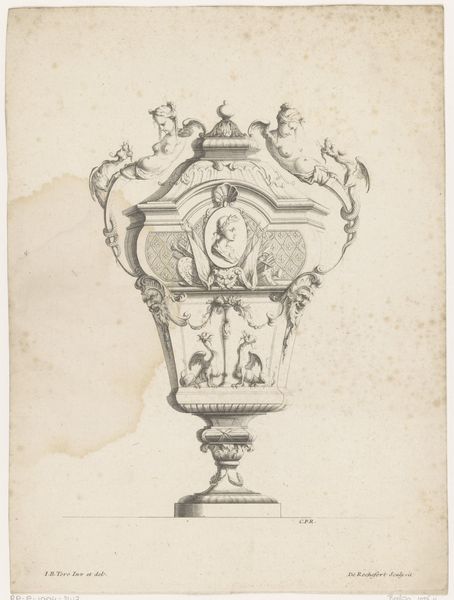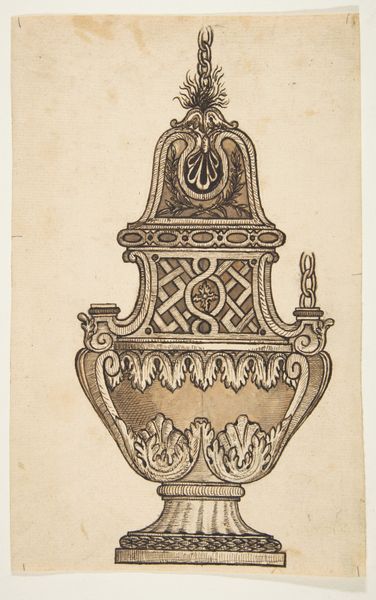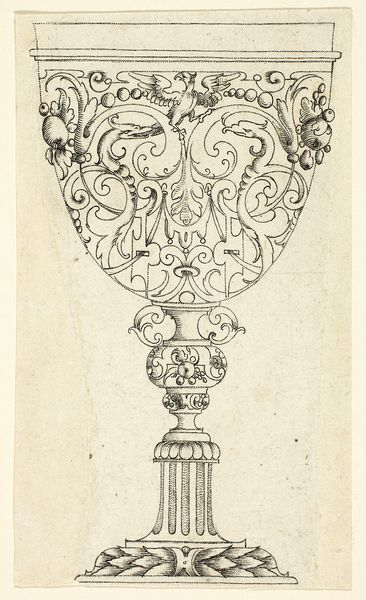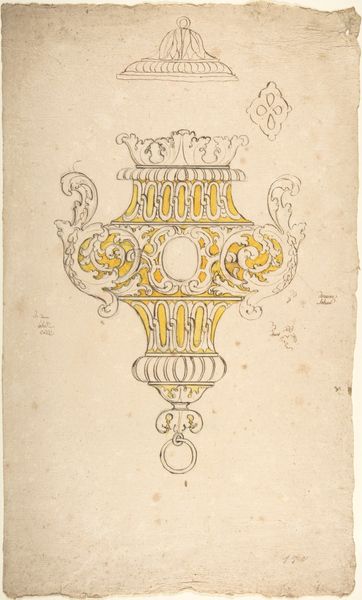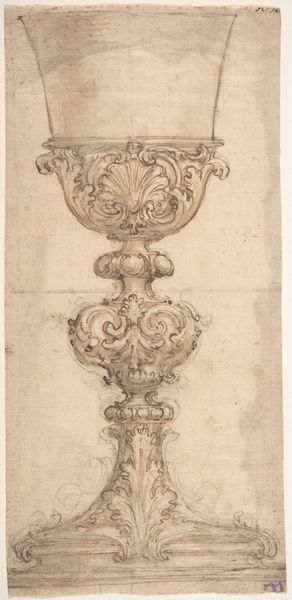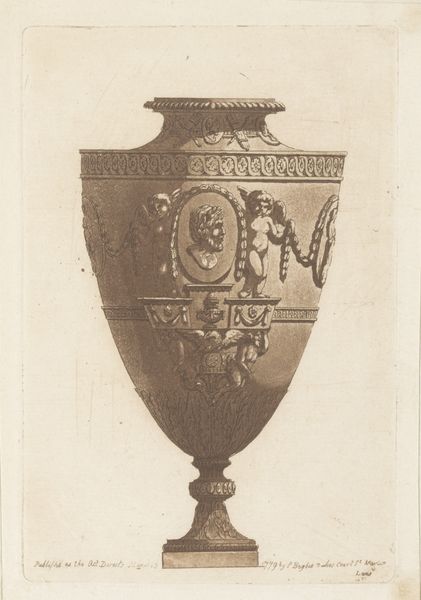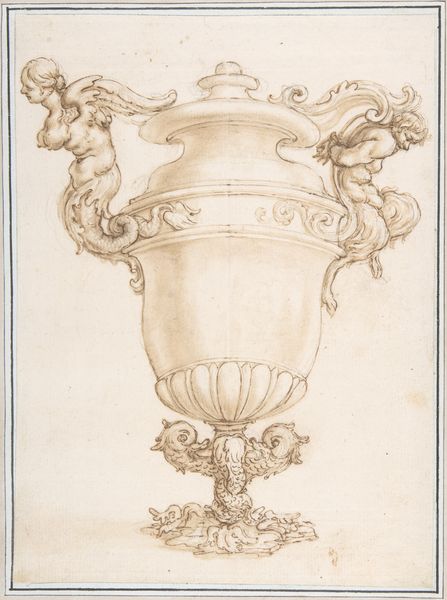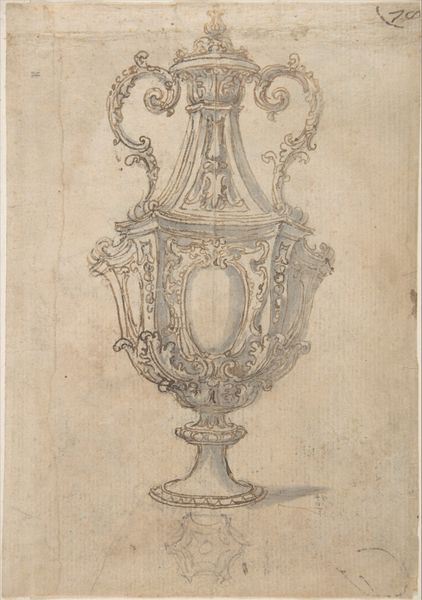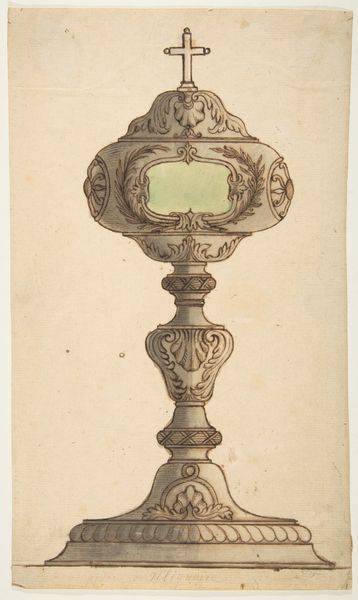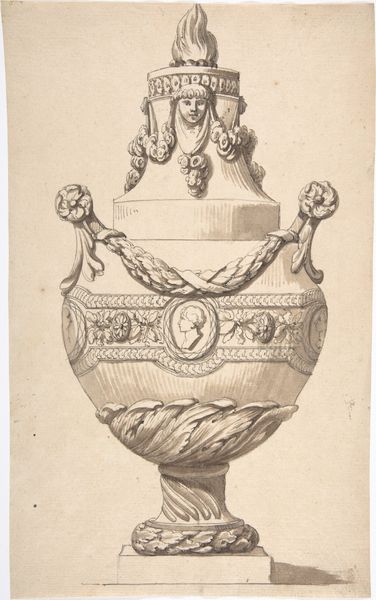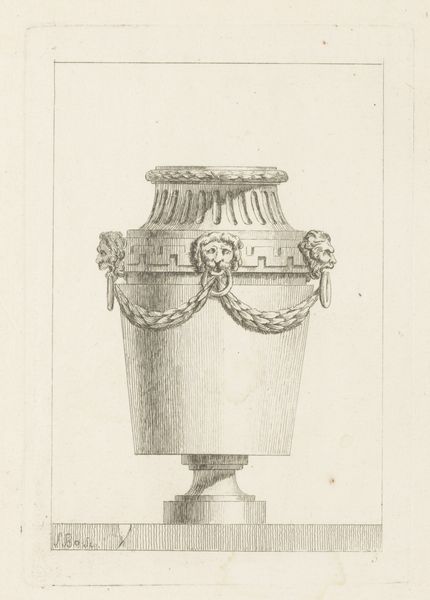
Outline of a Desin for a Vase with Two Handles 1652 - 1725
0:00
0:00
drawing, print, paper, ink
#
drawing
#
baroque
# print
#
paper
#
form
#
ink
#
geometric
#
line
#
history-painting
Dimensions: sheet: 2 5/8 x 1 1/2 in. (6.7 x 3.8 cm)
Copyright: Public Domain
Curator: Here we have "Outline of a Design for a Vase with Two Handles," a work on paper attributed to Giovanni Battista Foggini, likely created sometime between 1652 and 1725. Editor: My initial feeling is of delicate possibility. It's so minimal, just ink on paper, a fleeting idea given form. But also slightly macabre. Curator: Indeed, it possesses the elegance of Baroque aesthetics but stripped bare to its essential lines. Vases throughout history are powerful containers of symbolic meaning. Often connected with rituals, and the vessel form in itself, holding memories, hopes and desires. Editor: And potentially oppression. Consider what kinds of gatherings these vessels might have served, who would have owned them, who would have been excluded. That skull motif nestled within the larger design really adds another layer. Curator: The skull—a vanitas symbol par excellence. A memento mori reminding us of the transient nature of earthly pleasures and accomplishments. This drawing serves as a kind of warning against the ephemeral. But I'm curious about how the linear qualities affect its symbolism in our view. The image feels unfinished. Is Foggini pointing at how all cultural output is in fact transient, and will disappear with time? Editor: Maybe. I see it as less a statement about grand pronouncements, and more of one artist working through something, and inviting the audience to also see the potential behind it. In my own art background, leaving artworks unfinished invites others into a collaboration that bridges time itself. But you know what else this artwork inspires me to consider? Gender. This is a man designing an image of domestic life for the upper class of 18th century society. Did women agree that the vase symbolized their potential? Did they also view life with that sort of transient meaning? Curator: Those are really powerful ways to interpret those symbols with a critical perspective! These Baroque designs that seem at first glance purely aesthetic become fertile ground to really analyze art in light of both its own symbolism, and what those things might stand for to a new, modern, sensitive viewer. Editor: Right! Thank you, I have more questions now than I did before! Curator: Likewise. I think Foggini's sketch invites a deeper contemplation of the objects we imbue with significance, and how that significance shifts and changes over time.
Comments
No comments
Be the first to comment and join the conversation on the ultimate creative platform.
